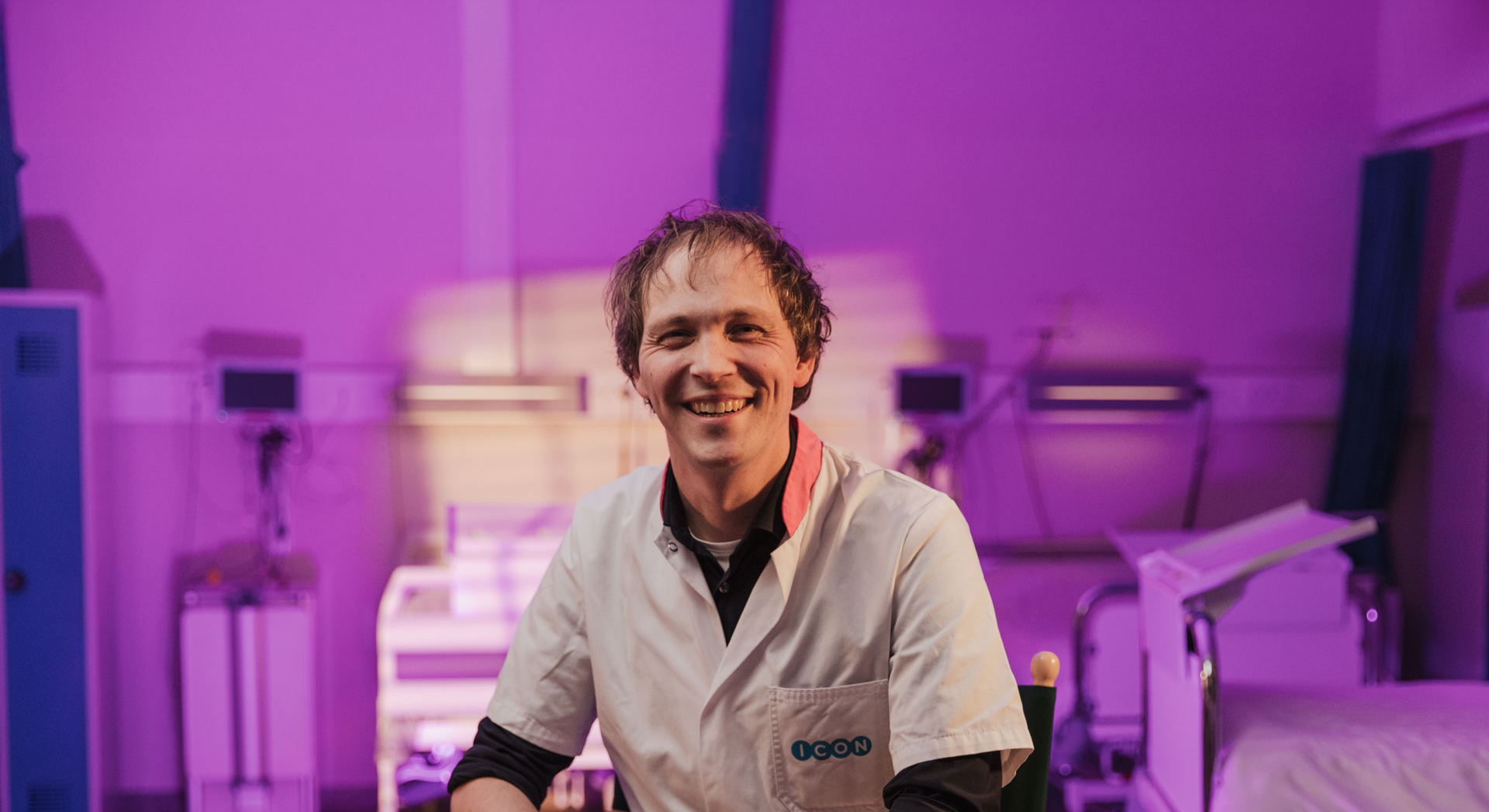
Interview with research physician Jart
“Would I let my own daughter participate?” – Clinical Research Physician Jart on his work at ICON
Back in high school, Jart didn’t yet know what he wanted to become. “I had broad interests and learning came naturally to me. I always found biology fascinating, the human body, but also everything beyond it.” He eventually chose to study medicine and started his career as a dermatology resident in a hospital. Still, he felt something was missing.
“Seeing a different patient every five minutes felt too superficial,” he explains. “I was looking for more depth and really wanted to understand why things are the way they are.” That’s how he discovered the world of clinical trials. “A recruiter introduced me to ICON. At first, I had no idea what to expect, but I immediately loved the work. I’ve now been here for five years and truly feel like I’m exactly where I belong.”
Never a dull day
“The fun part about this job is that no day is the same,” says Jart. “One day I’m designing a new clinical trial together with the sponsor, another day I’m working at the research center with participants. And sometimes I’m busy closing a project and reviewing all the data.”
He enjoys the balance between science and patient care. “I am both a doctor and a researcher. One day I’m focused on people, the next on data and protocols. That combination makes this job perfect for me.”
“We are at the beginning of new knowledge”
At ICON, the very first phase of clinical trials is carried out, the moment a new compound is tested in humans for the first time. “That’s what I love most,” Jart says. “You are literally at the start of new knowledge. What do we already know? What not yet? We learn something new every single day. And the idea that something you contribute to may help patients in the future, that is incredibly meaningful.”
Safety first
Many people ask whether participating in a clinical trial is truly safe. Jart’s answer is clear: “Yes, absolutely. We work very carefully and follow strict regulations. Everything is monitored, from the dosage to any side effects. And if something does occur, we can respond immediately.”
Before someone can take part, they always undergo a medical screening. “We want to know exactly how healthy you are, so we can assess whether participation is safe for you. After finishing the trial, we conduct a follow-up check to ensure everything is just as it was before you started.”
He also addresses questions about potential long-term effects:
“The compounds we test have already been extensively studied in the lab and in animals. So we already know a lot about how they work and their safety. We start with very low doses and the drug is only given for a short period. It fully leaves the body, so you don’t need to worry about lasting effects.”
With a smile he adds, “I often say: getting into a car is probably more dangerous than taking part in a clinical trial.”
Why people participate
According to Jart, most people join because of the compensation and that’s completely fine. “You are paid for the time you invest. The amount depends on the duration and intensity of the trial, but it’s not meant as a source of income. You can only take part a maximum of four times a year, so you can’t live off it. And it ensures that previous trials no longer have any effect on the body.”
But he often sees other motivations as well. “Many participants like the idea of contributing to medical progress. Everyone knows someone who is ill. By participating, you help not only yourself, but others too.”
“It must truly be your own decision”
What matters most to Jart is that participation is always voluntary. “I’m not here to give a sales pitch,” he says. “Everyone receives clear information and can ask as many questions as they want. But the decision should always be your own.”
And his personal rule of thumb?
“I often ask myself: would I feel comfortable if my own daughter took part? If the answer is yes, I know we’re doing things right. I keep that question in mind with every decision I make.”


